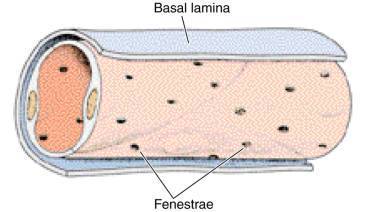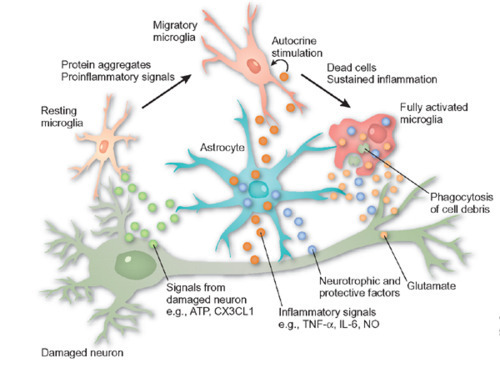The brain is a fragile, energetically demanding and crucial organ. It’s not quite as robust as the rest of the organs in the body. Furthermore, it has a delicate chemical balance of amino acids, neurotransmitters and ions to maintain so the impulses (action potentials) can be fired and propagated effectively, so the brain can process and analyse information, as well as send outputs to the rest of the body. The brain needs added protection. What does it need protecting from? Foreign pathogens, and unwanted chemicals. And how would they normally get to a healthy brain? Through the blood, of course.
Which brings us onto our first line of defence for the brain. The brain is defended by the Blood-Brain Barrier (BBB). Nearly all of the blood vessels in the brain are modified, to make it that much harder for substances and cells to cross into the brain. A normal blood capillary is slightly porous, to allow certain proteins and carbohydrates to pass through into the surrounding tissues.

Diagram of capillary
The BBB doesn’t have this. There are tight, protein junctions between the endothelial cells which constitute the capillary wall. Past this, there is a space, the exact use of which is poorly understood, known as the Virchow Robin Space. Then there is a protein basement membrane surrounding the capillary. Aside from this, there are types of glial cells such as pericytes and astrocytes which also monitor the environment, and regulate the blood flow.

Cross section of a cerebral capillary. This is the structure of the blood brain barrier. The blood brain barrrier is not a distinct organ, but rather, is a functional concept.
Within the endothelial cells constituting the cerebral capillaries are special efflux transporters which detect unwanted substances and then transport back them out of the endothelia, into the blood. There are also enzymes present, ready to breakdown unwanted substances. In fact, the BBB is pretty much built to exclude all proteins, carbohydrates and large molecules (most gases pass by just fine, if they can dissolve in the blood well enough etc). There are special proteins which are transporters. Their job is to transport glucose and other important substances (vital amino acids) into the brain. We utilise this to deliver drugs to the brain, as most drugs are excluded by the BBB. Patients with Parkinson’s disease require Dopamine treatment, as they have dopamine deficiency in the Striatal region of the brain (due to degeneration of the neurons of the substantia nigra). So instead of providing dopamine in drug form (as dopamine cannot cross the BBB), they are given L-DOPA which is a precursor to Dopamine. L-DOPA is accepted by the transporters (L-DOPA is transported by LAT-1 and LAT-2 proteins) and transported across the BBB. Once L-DOPA has crossed the BBB, the appropriate neurons will metabolise the L-DOPA into dopamine, and the Dopamine is replenished, helping to treat the symptoms of Parkinson’s disease.
The essential amino acids which cannot be produced in the brain must also be transported in. These are Phenylalanine, Isoleucine, Leucine, Threonine, Histidine, Tyrosine, Tryptophan, Methionine and Valine. I remember them by their official single letter abbreviations, which I arrange to form the accronym -
F I L T H Y W M V.
Yes, a crude pornographic satire there. It works though. The endothelial cells also are able to endocytose particular proteins, if need be.
It is through this that the brain is able to withstand infectious insult. When the rest of the body falls ill with something, the brain is usually relatively safe as a result of the BBB. However, the brain is exposed to pathogens through regions of the brain which don’t have BBB (out of necessity). These regions are known as circumventricular regions. There are 7 circumventricular regions in the brain.

(the subcommisural organ is not labelled) These regions lack BBB as they either need to sense substances in the blood stream, or need to release substances into tbe blood stream. For example, the Area Postrema is the ‘vomitting centre’ of the brain. It detects noxious chemicals in the blood, and then can trigger the vomitting reflex (emesis). The Posterior pituitary is responsible for releasing vital hormones into the blood.
If the brain is a victim to insult, or is damaged - then the systemic immune system will have trouble initially infiltrating (it does eventually). Microglia are the resident immune cells of the brain. They are usually in a dormant state, where they are stationary, but send out processes to scan the local environment for chemicals indicative of noxious insult or infection. When they do detect cell death, injury or infection, they activate and migrate to the offending site to release inflammatory agents and neuroprotective factors. If the neurons die, then microglia morph into a phagoyctic state, where they are capable of engulfing debris and digesting it. Glia are truly amazing cells, and get very little attention. Indeed, glia make up 90% of our brain cell count. In some cases, microglia work against us (though they mean well). They release inflammatory agents… but the brain is fragile and doesn’t cope well with inflammation. Inflammation of the brain is known as encephalitis. So if a microglial cell detects an invader (eg, Toxoplasma gondii), it try to initiate inflammation, but this just adds to the problem as the ionic balance of the neurons is disrupted, the neurons don’t work properly and eventually they die. Encephalitis is nasty, and usually fatal. One reason the brain wants to stave off infection with the BBB. As cerebral infection progresses, the BBB does open up to leukocytes and other cells of the systemic immune system.

Diagram of Microglial function
The brain is such an important organ, it literally defines 'us’ as who we are. It is the generator of consciousness and so much more - yet it is extremely fragile and exists in a fine balance between functionality and degeneration. And when the maintenence systems go wrong, we see conditions such as Alzheimer’s, encephalitis and even meningitis. It also highlights the fallibility of the human body, and why we shouldn’t take our lives for granted, and just be happy for waking up in the morning in one piece. Sometimes I wonder, what with all the thousands of systems in place keeping us alive, and the sheer number of things that go wrong, how the hell do I get through the day?

 tinylittlerocks liked this
tinylittlerocks liked this ryrnun liked this
captain-nitrogen-blog posted this